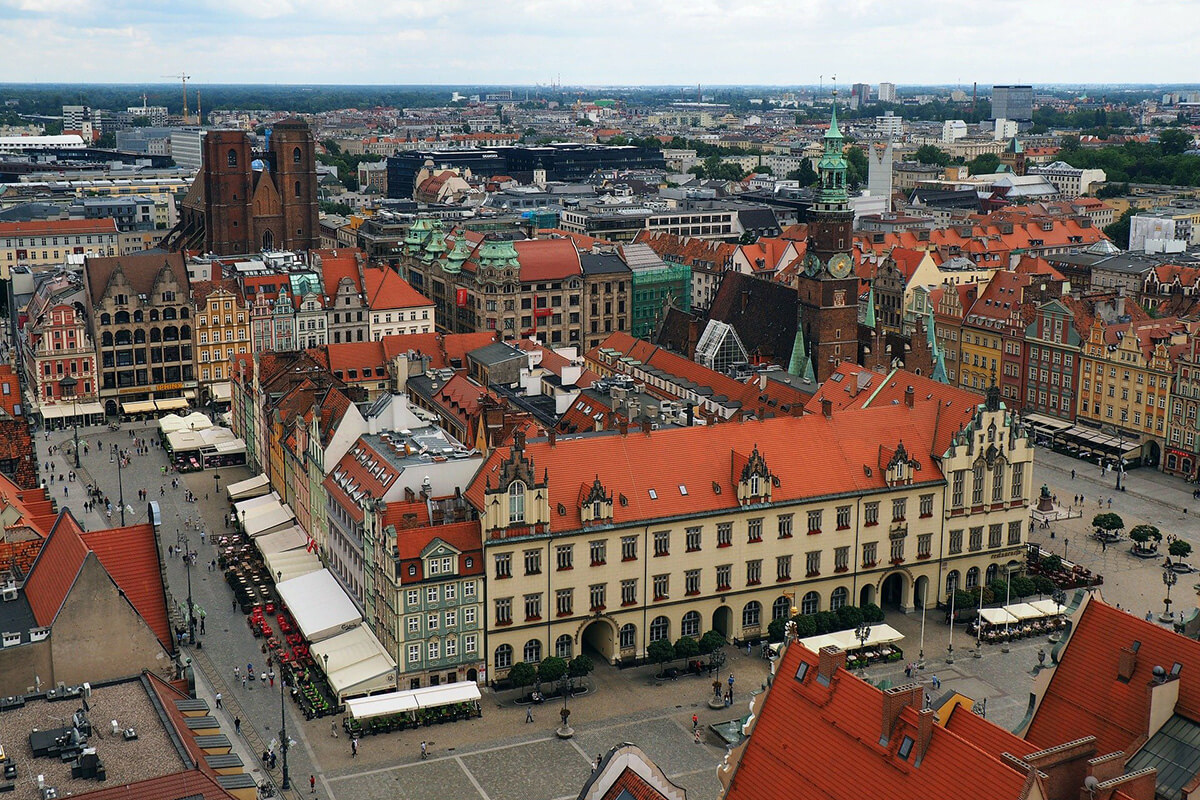Wroclaw is the 4th largest city in Poland and the capital of the historical region of Silesia. Wroclaw lies in the Lower Silesian lowlands at 111m on the upper course of the Oder. The city has a special location in this plain between the mountain ranges of the Katzengebirge in the north and the foothills of the Sudetenland in the south.
The Oder flows through this plain and in the urban area of Wroclaw 4 rivers flow into the Oder.
1)the Ohle (Polish Olawa),
2) the Lohe (Polish Sleza)
3) the willow (Polish Widawa)
and 4) the Schweidnitzer Weistritz (Polish Bystrzyca).
Wroclaw lies on twelve islands connected by 100-300 bridges. In addition to the many rivers and canals, there are many green areas, and therefore Wroclaw is, not politically speaking, the greenest city in Poland.
History
In the 4th or 5th centuries a Wandal tribe settled in the area around Breslau and later in the 6th century a Slav tribe settled there, which in the 6th century built a castle on the cathedral island.
Around 900 Wratislawa is a Slavic market town on the Oder with a castle complex on which the construction of the cathedral began in the year 1,000.
The further history of the town is long and intensively connected with many changes of power and different ruling dynasties.
In 1945 Breslau became Polish again after 600 years after it had belonged to Bohemia (at times Hungary), Austria and Prussia.
In Wroc?aw Old Town there are many old churches, museums, as well as numerous places of interest, parks and monuments.
The town is the economic, cultural and scientific centre of Lower Silesia.
overview map
Here you can see all current available stages in this region
following single stages are available



